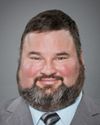[Witness speaks in his native language]
I'm Rod Jacobs, from Walpole Island First Nation, here in Ontario. I thank the Creator for giving me this opportunity. I also thank and acknowledge the traditional territories that we're in, which are those of the Algonquin people.
I want to thank everyone for giving us the opportunity to speak here today on this very important matter. But first, before I begin, I want to start by letting you know my father will die of obesity—and I'll get back to that.
As you know, obesity is related to many health risks in Canada. Over 50% of children and youths are either overweight or obese. This is one of the many factors that leave aboriginals vulnerable to a host of other health problems, such as cardiovascular disease, gall bladder disease, joint disease, stroke, and type 2 diabetes. Aboriginal people have a prevalence of diabetes up to five times higher than the general population of Canada. This in turn leads to a host of other chronic health issues.
In my language, niiyaw maajiishkaa means “to have an active body”. That's one of the things we practise. But you all know this, and you have many experts at your disposal to help understand why this is the case. Suffice it to say that obesity is just one of the suite of health challenges faced by aboriginal peoples. In fact, aboriginals as a population don't score well on many of the key determinants of health: employment and working conditions, income and social status, education and literacy, health services, and healthy child development, just to name a few.
The challenges are bigger than any of us. They are a vast and complex puzzle that require comprehensive and steadfast attention on many fronts. For this, there is no one solution. The Aboriginal Sport Circle has its part to play.
The circle is comprised of thirteen provincial and territorial aboriginal sport bodies. We were incorporated back in 1997. We have been working for ten years to develop the mechanisms for aboriginal sport and recreation that provide one small piece of the puzzle. We know sport and recreation provide an avenue for healthy, active lifestyles for all ages, and they are a good way to counter obesity and being overweight. What some people don't know is that sport and recreation also provide other essential elements for people's well-being.
Effective sport and recreation programs provide a vehicle for development of personal skills and self-esteem. They build community fabric, they underlie cultural connection and creative expression, and they counteract boredom and provide healthy alternatives for our youth. They teach teamwork and leadership and provide a place to belong. Sport and recreation have been used effectively for social development, crime prevention, substance abuse recovery, social inclusion, relief for young mothers, and a safe haven when one is needed. Where recreation directors and coaches exist, there are role models and an avenue for communication, for education about healthy eating and dealing with racism, for setting goals and reaching them.
In short, a community that is building a sport and recreation capacity is doing far more than providing active outlets for its kids. Powerful medicine is what we're dealing with.
We're dealing with a powerful medicine that comes from our traditional teachings of the medicine wheel that encompass the spiritual side of us, the emotional side of us, the mental side of us, and the physical side of us. As one, when we complete the circle, that medicine heals. It doesn't put a band-aid on anything; it heals us from the inside.
In February 2000, a national recreation round table on aboriginal/indigenous peoples was held in Maskwachees, Alberta. The delegates created the Maskwachees Declaration, which I'll read now: “Sustainable commitment and investment in active living, physical activity, physical education, recreation and sport are essential to promote health and address social issues facing Aboriginal/Indigenous Peoples in communities across Canada.” This still rings true.
Our path is a long one. We have been grateful for the ongoing support of Sport Canada in the development of the aboriginal sport policy. We recognize that it is important that we achieve meaningful inclusion in Canada within sport and recreation. Sport Canada has provided leadership among the FPT ministers of sport and recreation across the country, and these ministers have given aboriginal sport and recreation their attention over the past two years, but there is still more work to be done.
Further to this, we need to develop our PTs: our provincial and territorial aboriginal sport bodies need to be developed, as well as our grassroots. There is more work to be done in furthering that capacity; they can be provided the resources that will sustain them. We believe in doing that through our traditional teachings.
Our communities know the power of sport and recreation, particularly for our children and youth. Many communities have demonstrated their commitment by diverting their own scarce resources from other priorities into recreation directors and programming, but in many more that has not been possible. Many of our recreation directors are coming from other priorities—from our health budgets, from our education budgets, from our justice budgets. Government doesn't put its focus on recreation directors in our communities, which would help eliminate the obesity. If we invested time and money where the root source is, we would eliminate obesity; we'd have fewer bills, we'd have fewer health, education, and justice problems in our communities.
What is the role of Health Canada and INAC? To date, these ministries have been not particular partners in advancing aboriginal sport and recreation, but as we said before, there are many pieces to the puzzle, and we are one of them. We acknowledge the work being done for our communities in the spheres of education and public health, but we would willingly accept help in these two spheres, which are natural complements to our own, particularly in the area of health promotion. The pathway to greater health for each community will depend on all three of us working together.
The long-term athlete development model developed by Sport Canada takes a lifelong approach to sport. Our communities' past traditions have taken that same approach. We were going and coming, and there was always physical activity; sport has always been part of our lives, as well as recreation.
You asked the ASC here today to talk about obesity. Perhaps we've stretched your patience by extending our response to a wider perspective. We believe that healthier weights come from healthier lifestyles and that lifestyles are both environmentally and culturally based. In expanding the aboriginal sport and recreation movement, we can make a difference by drawing on traditional lifestyles, cultural practices, and holistic attitudes towards life. A happy, healthy community that laughs and plays together is perfectly consistent with aboriginal traditions, and it contributes much more than healthier weights.
This past year our national aboriginal hockey championships—which the director general, Tom Scrimger, attended—were aired live on the Aboriginal Peoples Television Network. They were among the most successful sporting programs they have ever had on the television. The championships drew the largest viewership, and because of that the network wants to continue to work on sport with us in the Aboriginal Sports Circle. We mention this because, between those 600 male and female athletes who come to our championships, there are another 1,000 at least in each of the provinces and territories who are striving to reach that goal, striving to participate.
We turn our attention to the North American Indigenous Games, which Ms. Tina Keeper is well familiar with, where we see her. It's so important to see the 5,000 or so athletes parading on the field, because sport and recreation means something to them. They have a goal, they become healthier, and they strive for that.
We point out these things because we see that these activities within aboriginal sport and recreation are very important and are powerful medicine for us to heal a hurting nation.
I talked about my dad when I began, because he will die. He will die of heart disease; he's obese. He comes to that although seven generations ago our people were strong. Our people were very strong. We gave up a lot, and now it's time for us to get that back.
Our people have told us to think seven generations ahead. Obesity will not be a problem in our communities, because we will fight it. My dad will die, but his memory will live on in his grandchildren, because he instilled values into my heart and into the heart of our youth. That's what we're here for: to eliminate those problems.
[Witness continues in native language]






